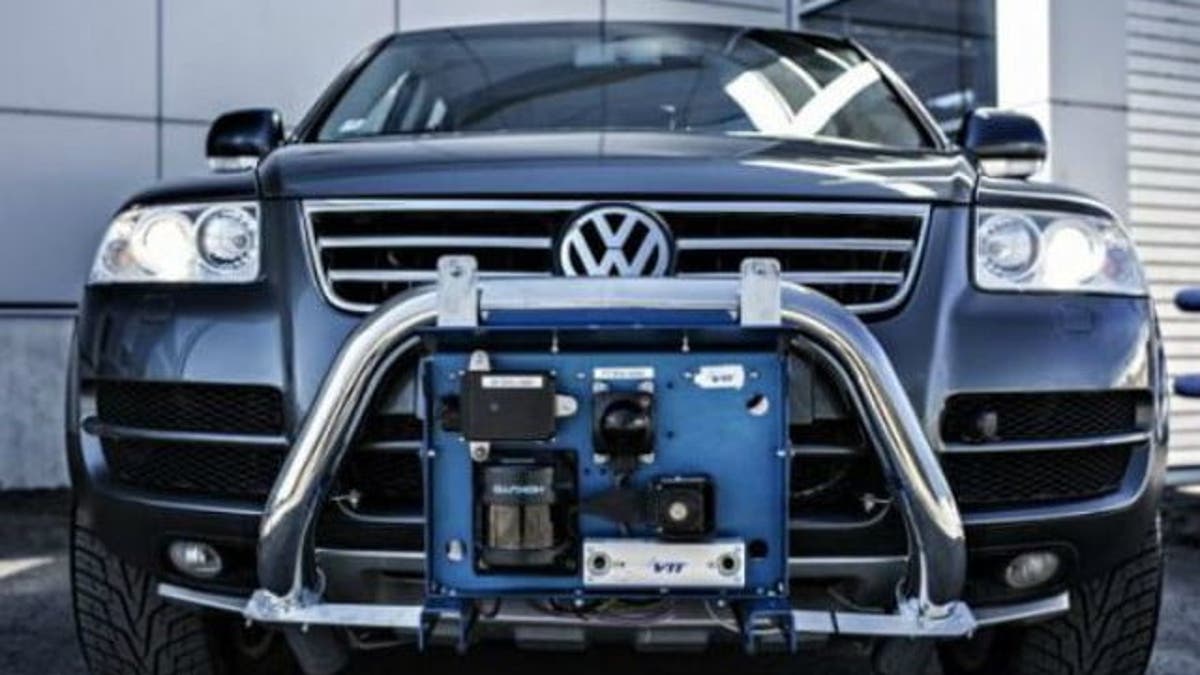
(VTT)
Driving in winter conditions can be slow and hazardous, even for skilled drivers. The self-driving cars in development today are generally designed and tested on city streets, with curbs and lane markings and GPS maps to rely on. But what happens when you live in a country like Finland, where roads covered with several inches of snow are a fact of life every year?
Researchers at the VTT Technical Research Centre are tackling that problem head-on with Martti, an autonomous vehicle specifically programmed to safely navigate public roads blanketed in snow. Built on a Volkswagen Touareg, it’s equipped with a variety of antennas, sensors, cameras, and laser scanners.
The vehicle set a speed record for traveling in snowy conditions, according to a press release from the RobotCar Crew. “It probably also made a new world record in fully automated driving, making 40 km/h [25 mph] in a snowfall on snow-covered terrain without lane markings,” said project manager Matti Kutila. It could have gone faster, he added, if it weren’t for the speed limiter on the vehicle.
The testing and training sessions took place on the Aurora E8 intelligent road in Muonio with Martti and his “spouse” Marilyn. She’s equipped with a different array of sensors, and the two cars communicate continuously. “Martti has been designed for demanding weather conditions and Marilyn shines as the queen of urban areas,” said Kutila.
Most autonomous vehicles rely on Lidar, or Light Detection and Ranging, which doesn’t work very well in snowy or whiteout conditions. Kutila told Bloomberg that Mattti is designed to work even “when turbulent snow degrades 3D-sensor performance.” The car’s systems include radar and three forward-facing lasers.
VTT is hardly the first self-driving company to experiment with snowy conditions, but it certainly has a head start on their competition, as Waymo and Yandex just began their adverse weather tests a couple months ago.
The team is planning to upgrade the optical components and increase the resolution of the radar. Early next year, Martti will also be able to communicate with existing transport infrastructure via communication modules.
Even with all the high-tech additions, Kutila says it’s not always the smoothest ride. “It’s a prototype and not as comfortable as driving manually,” he admits. “However, when the car starts doing decisions himself, it feels a bit like a human — and you even start talking to the car, ‘What are you doing?’”